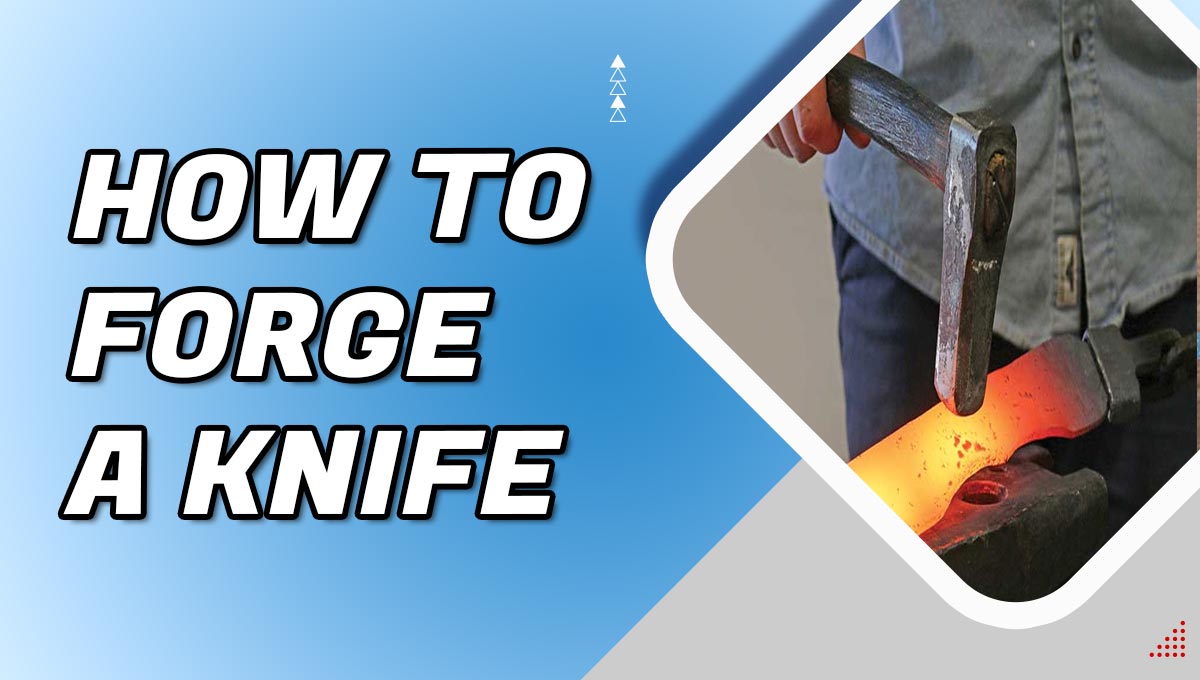Are you interested in making your own custom knives? Then forging knives might be the perfect hobby for you! Not only is it an enjoyable activity, but it also allows you to create unique knives that are tailored to your specific preferences. In this guide, we’ll cover everything you need to know to get started with forging your own knives, from choosing the right materials to mastering the techniques required to create a finished product.
Introduction
Forging knives can be an exciting and rewarding experience, but it requires a lot of patience and skill to master. Before getting started, you’ll need to gather some basic materials, such as a forge, an anvil, a hammer, tongs, and high-quality steel.
With these tools, you can begin the process of heating, hammering, and shaping your steel into a finished knife. In the following sections, we’ll go through each step of the process in detail, so you can create your own custom knife with ease.
Basic Materials Required for Forging Knives
To forge a knife, you’ll need to gather some basic materials that are essential for the process. These materials include:
- A forge: This is a specialized furnace that is used to heat up the steel to high temperatures for forging.
- An anvil: This is a heavy, solid metal block that is used to support the steel during forging.
- A hammer: You’ll need a heavy hammer that is comfortable to use for extended periods of time.
- Tongs: These are used to hold and move the hot steel while forging.
- High-quality steel: This is the most important material you’ll need for forging a knife. It’s essential to choose high-quality steel that is suitable for knife making.
Choosing the Right Steel for Your Knife
When choosing steel for your knife, there are several factors to consider, such as:
- The type of steel: There are many different types of steel available, each with its own unique properties. Some of the most popular options for knife-making include carbon steel, stainless steel, and tool steel.
- The composition of the steel: The composition of the steel can affect its performance and durability. For example, steel with a higher carbon content is generally harder and more durable than steel with a lower carbon content.
- The heat treatment requirements: Different types of steel require different heat treatment processes to achieve the desired properties. It’s important to choose a steel that can be easily heat-treated using the equipment you have available.
Understanding the Heat Treatment Process
The heat treatment process is a critical step in knife making, as it determines the properties of the finished blade. The process involves heating the steel to a specific temperature, then cooling it rapidly to harden the metal.
This is followed by tempering, which involves heating the blade again to a lower temperature to reduce its brittleness and increase its toughness. It’s important to follow the recommended heat treatment process for your chosen steel to achieve the best possible results.
Setting up Your Forge
Before you can start forging, you’ll need to set up your forge. This involves creating a firebox and lining it with refractory materials to insulate it. Setting up your forge is an important step in knife forging, as it’s where you’ll be heating your steel to the necessary temperature for shaping and hardening. Here are the basic steps for setting up your forge:
- Choose a location: You’ll need a safe and well-ventilated area to set up your forge. A garage or outdoor space with a solid surface is ideal.
- Build a firebox: A firebox is a container that holds the fuel and allows you to control the heat of the forge. You can purchase a pre-made firebox or build one yourself using fire bricks.
- Line the firebox: To insulate the firebox, line it with a layer of refractory material such as fire bricks, ceramic fiber, or perlite.
- Add a fuel source: The most common fuel sources for forges are coal, charcoal, or propane. Choose a fuel source that’s easily accessible and affordable in your area.
- Install a burner: If you’re using propane, you’ll need to install a burner to regulate the flame and heat output of your forge.
- Test your forge: Before using your forge to heat your steel, test it to ensure that it’s heating evenly and at the desired temperature.
Setting up your forge may require some trial and error, but with patience and practice, you’ll be able to create a safe and effective heating environment for your knife forging.
Basic Forging Techniques for Knife Making
Once you’ve set up your forge and gathered your materials, it’s time to start forging your knife. Here are some basic techniques you’ll need to master:
Drawing out
Drawing out is the process of elongating your steel by hammering it repeatedly in one direction. This is often the first step in knife forging, as it creates the basic shape of the blade. To draw out your steel, heat it until it’s malleable and use your hammer to strike it repeatedly in the same direction until it reaches the desired length and width.
Upsetting
Upsetting is the opposite of drawing out, as it involves shortening your steel by hammering it repeatedly in one spot. This technique is used to create the thicker parts of your knife, such as the bolster or the tang. To upset your steel, heat it until it’s malleable and strike it repeatedly in one spot until it thickens to the desired size.
Bending
Bending is the process of shaping your steel into the desired curve or angle. This is often done to create the tip or curve of the blade. To bend your steel, heat it until it’s malleable and use your hammer and anvil to shape it into the desired curve or angle.
Tapering
Tapering is the process of gradually reducing the thickness of your steel from one end to the other. This is often done to create the point of the blade or the tip of the tang. To taper your steel, heat it until it’s malleable and use your hammer to strike it repeatedly in one direction until it thins to the desired thickness.
The Importance of Proper Hammering Techniques
Hammering is a critical part of knife forging, as it’s what allows you to shape and refine your steel. Here are some tips for using your hammer effectively:
- Use a heavy hammer: A heavy hammer will allow you to apply more force and control to your strikes, making it easier to shape your steel.
- Use a comfortable grip: A comfortable grip on your hammer will reduce hand fatigue and allow you to work for longer periods of time.
- Strike with the correct angle: The angle of your strikes can affect the shape and direction of your steel. For example, striking at a 45-degree angle will elongate your steel, while striking.
Conclusion
Knife forging is an ancient craft that has been passed down through generations. While it can be a challenging and time-consuming process, the end result is a unique and durable tool that can be treasured for years to come. Whether you’re a seasoned blacksmith or a beginner, with the right tools, materials, and techniques, anyone can learn how to forge a knife. By following the steps outlined in this guide, you can create a custom knife that is perfectly suited to your needs and preferences. So why not give it a try and start forging your own knives today?
Frequently Asked Questions
How long does it take to forge a knife?
The time it takes to forge a knife varies depending on the complexity of the design and the skill level of the forger. A simple knife can be forged in a few hours, while a more complex design may take several days.
What types of steel are best for knife forging?
High carbon steel, such as 1095 or W2, is often preferred for knife forging due to its ability to hold a sharp edge and withstand frequent use. Stainless steel can also be used, but it may be more difficult to shape and harden.
Do I need any special tools for knife forging?
While there are some specialized tools available for knife forging, such as a belt grinder or a power hammer, it’s possible to create a knife using only basic tools such as a hammer, anvil, and forge.
Can I forge a knife without a forge?
While it’s technically possible to forge a knife without a forge, it would require a lot of time and effort. Without a forge, you would need to use a torch to heat your steel and a hammer to shape it. It’s much easier and more efficient to use a forge.

